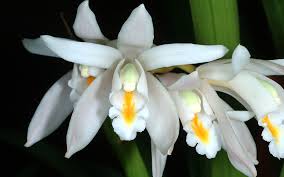# How to Build a White Egg Orchid Care Kit at Home

## Table of Contents
1. **Introduction**
2. **Understanding White Egg Orchids**
– 2.1. Characteristics of White Egg Orchids
– 2.2. Benefits of Growing White Egg Orchids
3. **Essential Tools for Orchid Care**
– 3.1. Watering Tools
– 3.2. Potting Tools
– 3.3. Pruning Tools
– 3.4. Pest Control Tools
– 3.5. Fertilization Tools
4. **Choosing the Right Potting Medium**
– 4.1. Types of Potting Medium
– 4.2. Recommended Potting Mixes for White Egg Orchids
5. **Building Your Orchid Care Kit**
– 5.1. Essential Items
– 5.2. Optional Items for Advanced Care
6. **Step-by-Step Guide to Orchid Care**
– 6.1. Watering Your White Egg Orchids
– 6.2. Repotting Your Orchids
– 6.3. Fertilizing Your Orchids
– 6.4. Pruning and Maintenance
– 6.5. Pest Management
7. **Tips for Growing Healthy White Egg Orchids**
– 7.1. Optimal Light Conditions
– 7.2. Humidity and Temperature Requirements
– 7.3. Common Mistakes to Avoid
8. **Conclusion**
9. **FAQs**
—
## 1. Introduction
Creating a thriving environment for your White Egg Orchids (*Phalaenopsis*) requires more than just love and attention. It involves understanding their needs and having the right tools to provide optimal care. In this article, we will guide you through building a comprehensive orchid care kit at home, ensuring your orchids remain healthy and beautiful throughout their lifecycle.
## 2. Understanding White Egg Orchids
Before diving into the specifics of building your care kit, it’s essential to understand the unique characteristics and needs of White Egg Orchids.
### 2.1. Characteristics of White Egg Orchids
White Egg Orchids are known for their elegant, creamy-white flowers and broad, leathery leaves. They typically bloom in cycles, producing stunning flowers that can last for several months. Key characteristics include:
– **Growth Pattern**: These orchids grow from a single stem and can produce multiple blooms.
– **Size**: Depending on the variety, they can range from small to large plants.
– **Lifespan**: With proper care, White Egg Orchids can live for many years.
### 2.2. Benefits of Growing White Egg Orchids
Growing White Egg Orchids offers numerous benefits, including:
– **Aesthetic Appeal**: Their elegant flowers enhance the beauty of any indoor space.
– **Air Quality Improvement**: Like many houseplants, orchids help purify the air by removing toxins.
– **Therapeutic Benefits**: Caring for plants can reduce stress and promote well-being.
## 3. Essential Tools for Orchid Care
A well-equipped orchid care kit will make maintaining your White Egg Orchids more manageable and enjoyable. Below are essential tools to include in your kit:
### 3.1. Watering Tools
– **Watering Can with a Fine Spout**: This allows for precise watering without over-soaking the potting medium.
– **Moisture Meter**: This tool helps determine when your orchids need watering, preventing overwatering or underwatering.
### 3.2. Potting Tools
– **Orchid Potting Mix**: A specialized mix designed for orchids, often containing bark, sphagnum moss, and perlite.
– **Potting Containers**: Clear plastic pots with drainage holes are ideal for growing orchids, allowing you to monitor root health.
### 3.3. Pruning Tools
– **Sterilized Scissors or Pruners**: Used for trimming dead or yellowing leaves and spent flower stems to promote healthy growth.
– **Tweezers**: Handy for removing pests or debris without damaging the plant.
### 3.4. Pest Control Tools
– **Insecticidal Soap or Neem Oil**: These natural pesticides help manage common pests like aphids and spider mites.
– **Spray Bottle**: Useful for applying pest control solutions and misting orchids for humidity.
### 3.5. Fertilization Tools
– **Orchid Fertilizer**: A balanced fertilizer specifically formulated for orchids, often with a higher phosphorus content to encourage blooming.
– **Measuring Spoon**: For accurate fertilizer application according to package instructions.
## 4. Choosing the Right Potting Medium
Selecting the appropriate potting medium is crucial for the health of your White Egg Orchids. The medium provides support and aeration while retaining moisture.
### 4.1. Types of Potting Medium
Orchids thrive in well-draining mediums. Common potting materials include:
– **Bark Chips**: Provide excellent drainage and aeration.
– **Sphagnum Moss**: Retains moisture but can hold too much water if not mixed with other materials.
– **Perlite**: Improves aeration and drainage.
### 4.2. Recommended Potting Mixes for White Egg Orchids
You can create a custom mix using the following components:
– 50% bark chips
– 25% sphagnum moss
– 25% perlite
This combination allows for proper moisture retention while ensuring adequate drainage.
## 5. Building Your Orchid Care Kit
Now that you know the essential tools and potting medium, it’s time to assemble your orchid care kit.
### 5.1. Essential Items
1. **Watering can with a fine spout**
2. **Moisture meter**
3. **Orchid potting mix**
4. **Clear plastic pots with drainage holes**
5. **Sterilized scissors or pruners**
6. **Tweezers**
7. **Insecticidal soap or neem oil**
8. **Spray bottle**
9. **Orchid fertilizer**
10. **Measuring spoon**
### 5.2. Optional Items for Advanced Care
1. **Humidity tray**: For maintaining humidity levels.
2. **Grow lights**: To provide additional light if natural sunlight is insufficient.
3. **Plant stakes**: To support taller orchids and prevent bending.
## 6. Step-by-Step Guide to Orchid Care
With your care kit ready, here’s a step-by-step guide to maintaining your White Egg Orchids.
### 6.1. Watering Your White Egg Orchids
1. **Check Moisture Levels**: Use the moisture meter to determine if the potting medium is dry.
2. **Watering Technique**: Water until it drains out of the bottom, ensuring the roots are thoroughly soaked.
3. **Frequency**: Water once a week, adjusting based on humidity and temperature.
### 6.2. Repotting Your Orchids
Orchids typically require repotting every 1-2 years. Here’s how to do it:
1. **Choose the Right Time**: The best time to repot is after blooming.
2. **Prepare the New Pot**: Fill it with fresh potting mix.
3. **Remove the Orchid**: Gently take the orchid out of its old pot, trimming any dead roots.
4. **Replant**: Position the orchid in the new pot and fill in with potting mix, ensuring the roots are well-covered.
### 6.3. Fertilizing Your Orchids
1. **Dilution**: Mix the orchid fertilizer with water according to package instructions.
2. **Application**: Fertilize every two weeks during the growing season and reduce to once a month in winter.
### 6.4. Pruning and Maintenance
1. **Inspect Regularly**: Check for dead or yellowing leaves and remove them with sterilized scissors.
2. **Spent Blooms**: Cut the flower spike back to promote new growth.
### 6.5. Pest Management
1. **Inspect for Pests**: Regularly check for signs of pests like aphids or mealybugs.
2. **Apply Treatments**: Use insecticidal soap or neem oil as needed, following instructions carefully.
## 7. Tips for Growing Healthy White Egg Orchids
### 7.1. Optimal Light Conditions
White Egg Orchids thrive in bright, indirect sunlight. Place them near a window with filtered light or use sheer curtains to diffuse direct sunlight.
### 7.2. Humidity and Temperature Requirements
– **Humidity**: Aim for humidity levels of 50-70%. Use a humidity tray or mist the orchids regularly.
– **Temperature**: Maintain temperatures between 65°F to 80°F (18°C to 27°C) during the day and slightly cooler at night.
### 7.3. Common Mistakes to Avoid
– **Overwatering**: One of the most common mistakes is overwatering, leading to root rot. Always check the moisture level before watering.
– **Poor Lighting**: Ensure your orchids receive adequate light; too little light can inhibit blooming.
## 8. Conclusion
Building a care kit for your White Egg Orchids is an essential step in ensuring their health and beauty. With the right tools, potting medium, and care techniques, you can enjoy vibrant blooms and a thriving plant for years to come. Remember that each orchid is unique, so take the time to observe their specific needs and adjust your care routine accordingly. With patience and dedication, your White Egg Orchids will flourish, adding beauty and elegance to your home.
## 9. FAQs
**Q1: How often should I water my White Egg Orchids?**
A: Water your orchids once a week, adjusting based on humidity and temperature.
**Q2: When should I repot my White Egg Orchids?**
A: Repot every 1-2 years, preferably after blooming.
**Q3: What type of fertilizer should I use for my orchids?**
A: Use a balanced orchid fertilizer with a higher phosphorus content to encourage blooming.
**Q4: How can I tell if my orchids are getting enough light?**
A: If the leaves are a rich green color, your orchids are likely getting enough light. Yellowing leaves may indicate too much light, while dark green leaves may suggest insufficient light.
**Q5: What pests should I watch for on my orchids?**
A: Common pests include aphids, spider mites, and mealybugs. Regular inspections will help you catch any infestations early.
—
This comprehensive guide provides everything you need to build a successful care kit for your White Egg Orchids, ensuring they remain a stunning part of your home for years to come.

